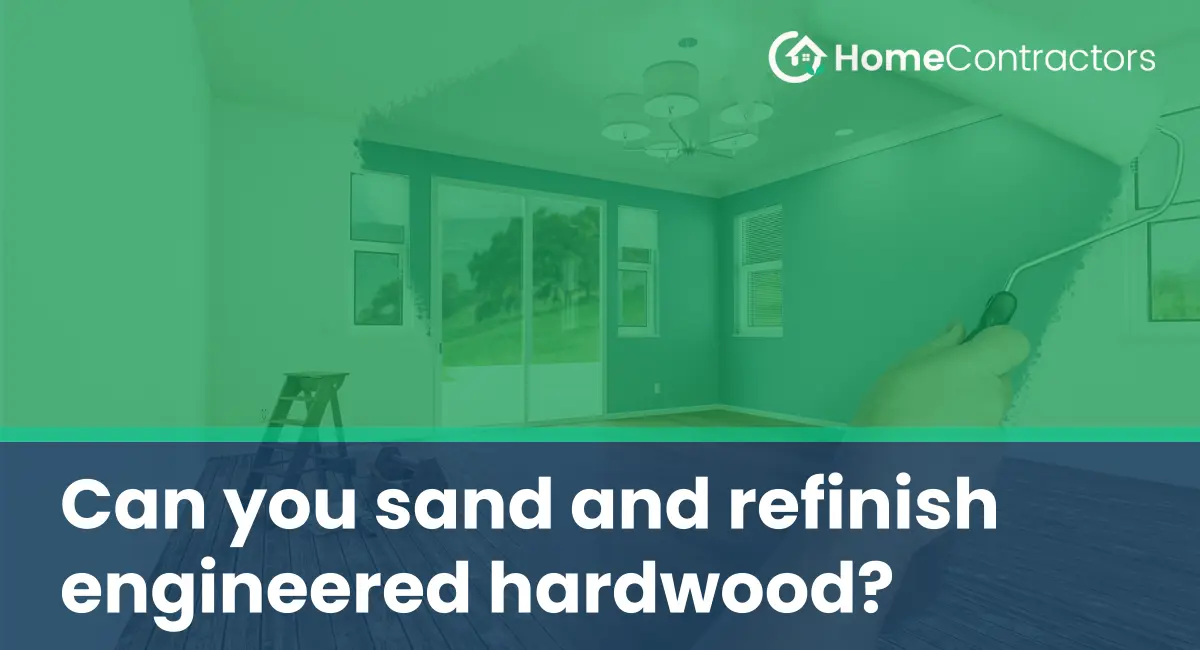Engineered hardwood flooring has gained popularity in recent years due to its durability, ease of installation, and overall aesthetic appeal. This type of flooring is made up of multiple layers of plywood or high-density fiberboard, topped with a layer of real hardwood veneer. However, one question that often arises is whether it is possible to sand and refinish engineered hardwood. In this article, we will explore this topic in detail and provide you with all the information you need to know.
Understanding Engineered Hardwood:
Before discussing the sanding and refinishing process, it is important to understand how engineered hardwood differs from solid hardwood flooring. Unlike solid hardwood, engineered hardwood is not one solid piece of wood. Instead, it is composed of several layers, making it more dimensionally stable and less prone to warping or expanding in the presence of moisture. The top layer, or veneer, is made of real hardwood, giving engineered hardwood the same natural beauty and characteristics as solid hardwood.
Factors to Consider:
While engineered hardwood can be sanded and refinished, there are some factors that need to be taken into consideration. The thickness of the top veneer layer is crucial when deciding if sanding and refinishing is possible. Thicker veneer layers allow for more sanding before reaching the substrate, while thinner veneers may limit the number of times the floor can be refinished.
1. Thickness of Veneer Layer:
The thickness of the veneer layer is typically measured in millimeters. Typically, engineered hardwood with a veneer thickness of 2mm or more can be sanded and refinished multiple times throughout its lifespan. However, if the veneer is less than 2mm, sanding and refinishing may not be recommended as it can potentially damage the floor.
2. Condition of The Floor:
The overall condition of the engineered hardwood floor is also an important factor to consider before deciding to sand and refinish. If the floor has deep scratches, excessive wear, or water damage, sanding and refinishing can help restore its original beauty. However, if the floor is severely damaged or has areas where the veneer layer is worn down, it may be necessary to replace the affected planks instead of attempting to refinish them.
The Sanding and Refinishing Process:
If your engineered hardwood floor meets the necessary criteria for sanding and refinishing, the process can be similar to that of solid hardwood flooring. Here are the basic steps involved:
1. Prep the Area:
Clear the room of furniture and any objects that may hinder the sanding process. Cover doorways and vents to prevent dust from spreading throughout the house.
2. Sanding:
Use a drum sander or a random orbital sander to carefully sand the entire floor surface. Start with a coarse grit sandpaper and gradually move to finer grits until achieving the desired smoothness. Proper sanding removes the existing finish, scratches, and imperfections from the veneer layer.
3. Staining (optional):
If you wish to change the color of your engineered hardwood, applying a stain is an option. Choose a compatible stain for engineered hardwood and apply it evenly following the manufacturer’s instructions. Remember to allow adequate drying time before applying a finish.
4. Applying the Finish:
Once the surface is sanded and stained (if desired), applying the finish is the final step. Use a high-quality water-based or oil-based polyurethane finish to protect the wood and enhance its appearance. Apply multiple coats following the manufacturer’s instructions, and allow sufficient drying time between each coat.It is possible to sand and refinish engineered hardwood under specific circumstances. Factors such as the thickness of the veneer layer and the condition of the floor play a crucial role in determining whether sanding and refinishing is a viable option. If the conditions are met, proper sanding, staining (if desired), and finishing can restore the beauty and extend the lifespan of your engineered hardwood floor. However, if your floor does not meet the necessary criteria, it may be best to consult a professional or consider alternative options such as replacing damaged planks.
